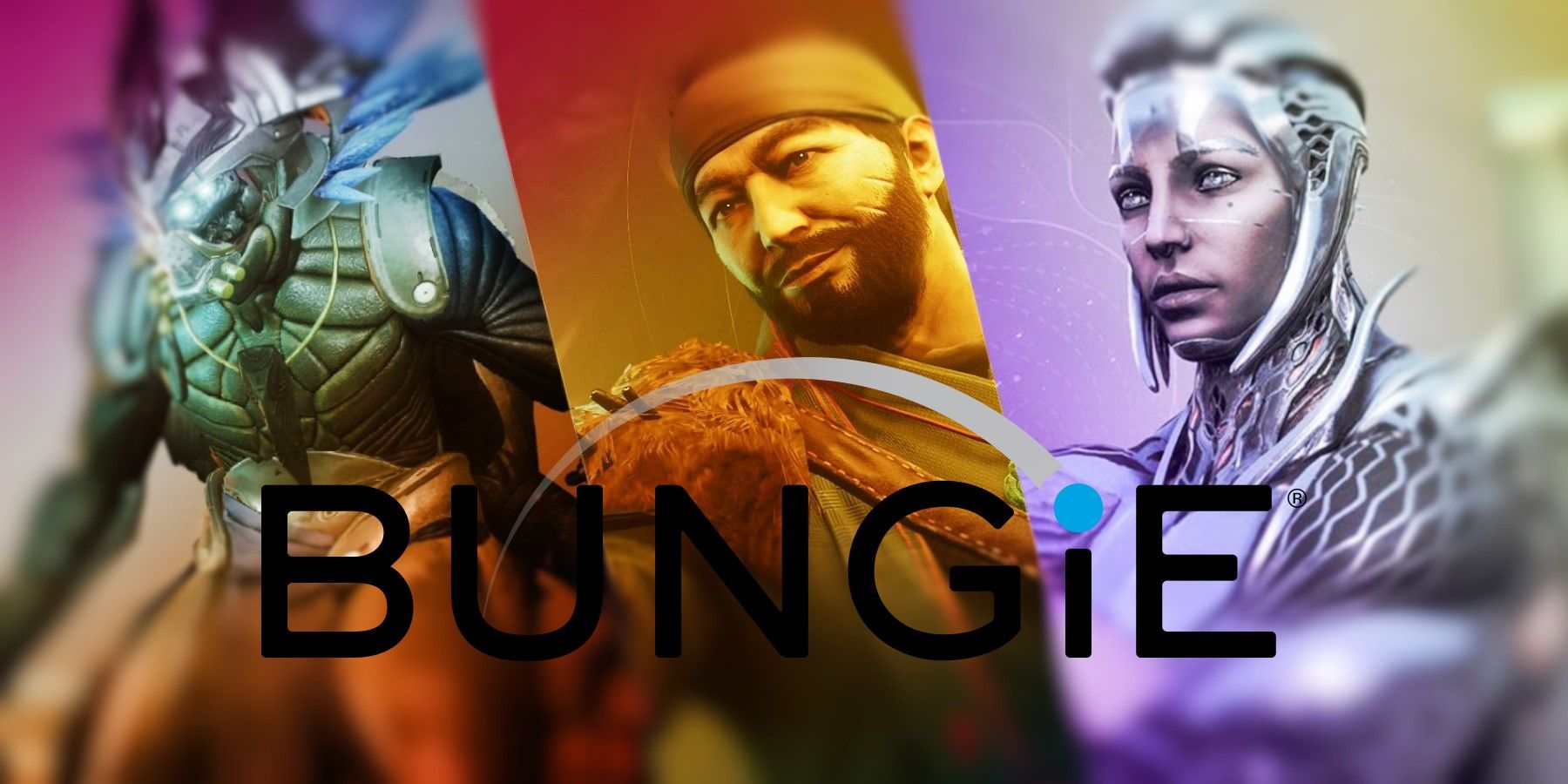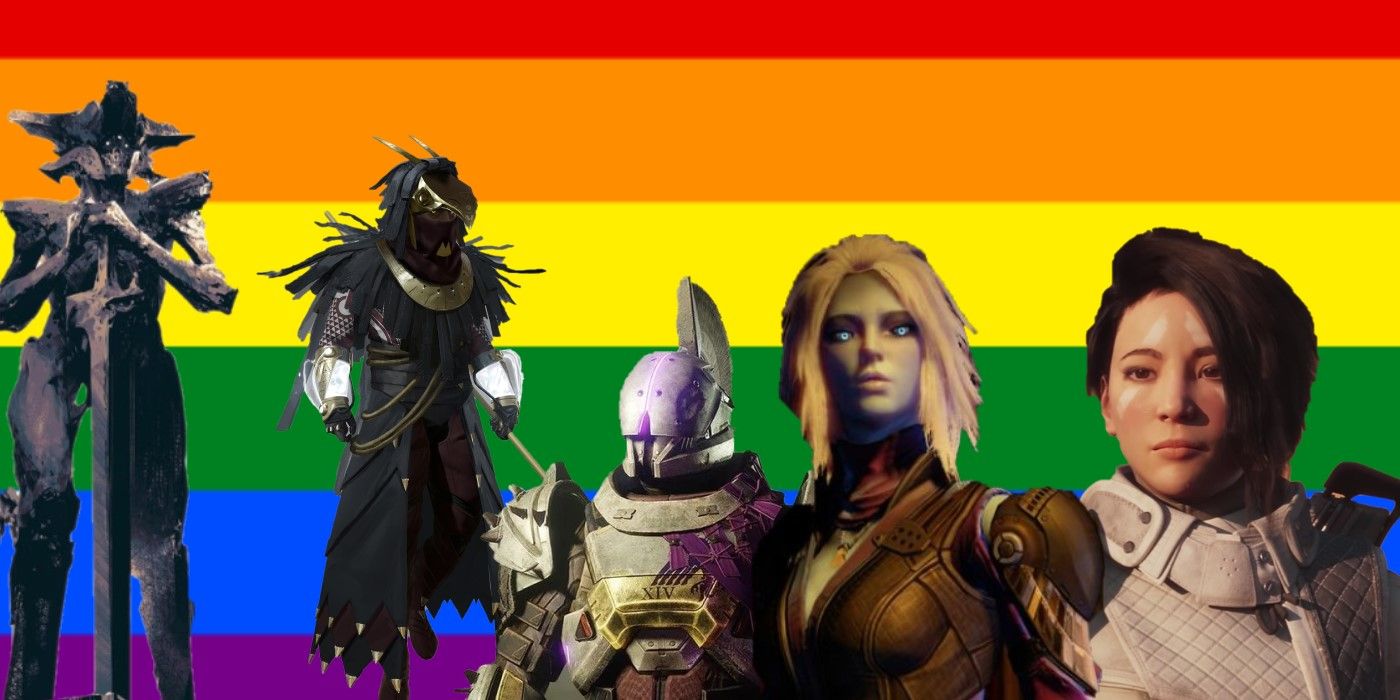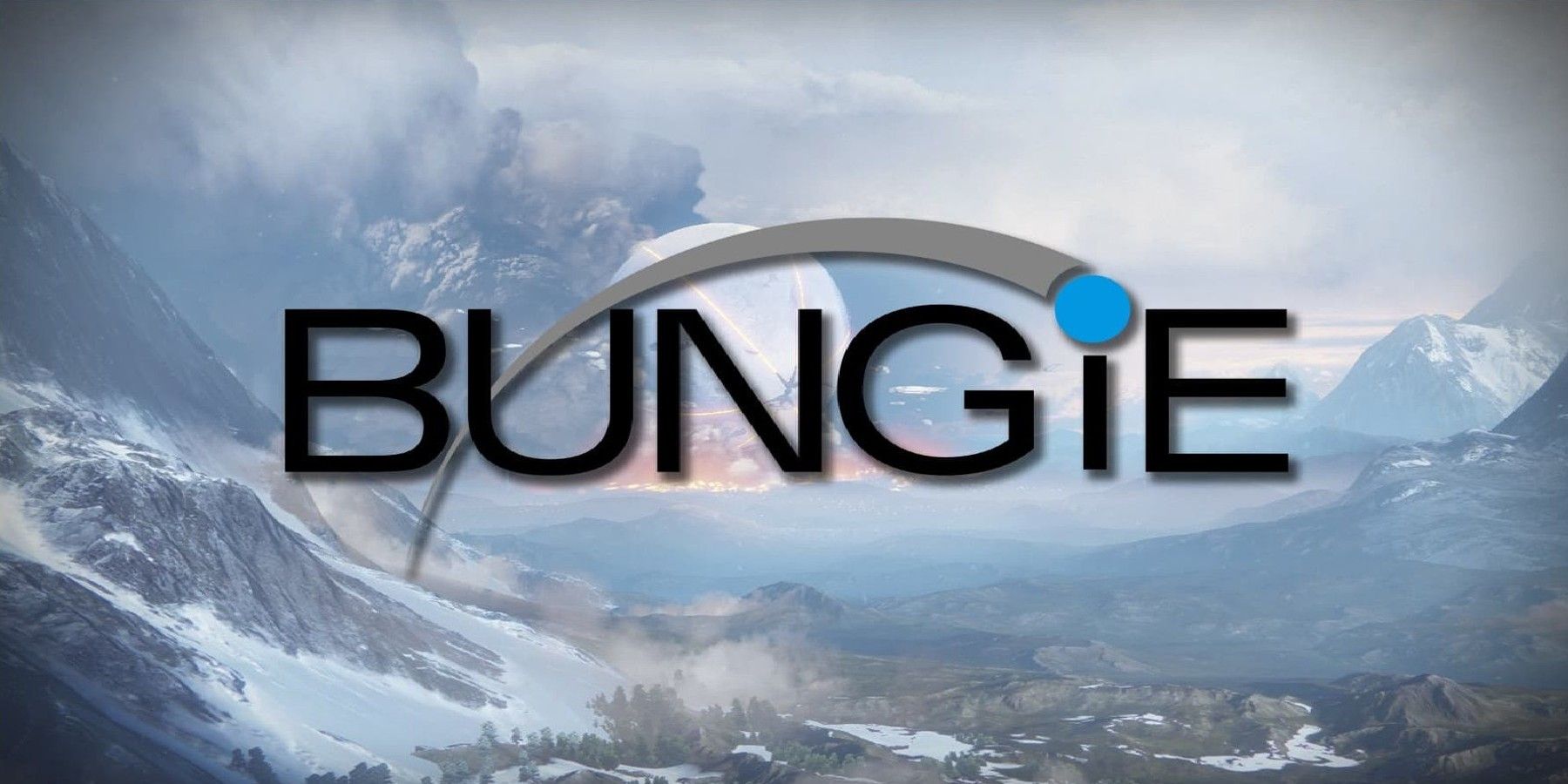Following in its own footsteps, Bungie honored National Coming Out Day yesterday by publishing an article on its website about the importance of being true to one's own sexual orientation and gender identity, and how this ties with Destiny 2. LGBTQIA+ representation is not something entirely new in Destiny 2, which, according to past reports, became a problem due to Bungie's so-called "old guard" having a different vision for its sci-fi looter shooter. Characters like Devrim Kay and Ana Bray were given more depth by making them have same-sex partners, and even fiercer representation came in the form of Saint-14 and Osiris being in a love relationship, which Bungie writers defended when it was called "just friendship" by some fans.
Alongside the National Coming Out Day post, Bungie released five posters representing Destiny 2 characters, each with a different LGBTQIA+ flag pattern. Saint-14 aptly got the gay flag, Mara Sov the bisexual flag, Eramis the lesbian flag, a Cloud Strider named Nimbus the nonbinary flag, and finally the Drifter the pansexual flag. Some of these characters have in-lore reasons behind their sexual orientation or gender identity, whereas others don't - yet. Regardless, this is an important discourse that Bungie has repeatedly shown not to be afraid of, and other video games should follow, creating more inclusive spaces and more great representation for all players.
Why LGBTQIA+ Representation in Destiny 2 Works Seamlessly
Many wrongly assumed that when Osiris tried to bring Saint-14 back to life in Season of Dawn it was out of respect for a fellow legendary Guardian, but the real reason was that the two had always felt a stronger connection than just friendship or war bonding. The power couple reached great heights in the era from Season of the Hunt up until The Witch Queen's release, with Saint-14 trying his best to rescue Osiris from Savathun's grips and referring to his lover as "my phoenix."
This is not something that's seen very often in video games, and while the tides are rapidly shifting to better match a more inclusive and ever-evolving society, only a few developers and AAA titles managed to do something to the same effect as Bungie's Destiny 2. Yesterday's posters went even deeper into representation by making some characters canonically queer, such as the Drifter, who has always been a gray character when it comes to sexual orientation and gender identity. Despite not having existing lore tied to the Drifter in these regards, defining him as a pansexual character is not only good representation, but fits the character very well, to the point that it gives whacky theories about him being in love with the playing character some credit.
Eramis being lesbian is not news per se, as she was already canonically established to be in a relationship with a female Eliksni before the current events of Destiny 2's Season of Plunder, but it does provide the character with more depth all the same. This is because Eramis was the main villain in the Beyond Light expansion, and then she came back to reprise her role in Season of Plunder as well. As such, Bungie's vision creates an interesting character with her own shortcomings, but Eramis' backstory and sexual orientation make her more compelling than just an "evil alien."
The characters from the posters are just the tip of the iceberg in Destiny 2's LGBTQIA+ representation, though, as there are even more through the likes of lore-only characters such as Micah-10 or Eriana-3, going all the way to Oryx, the Hive God. In fact, Oryx was considered transgender because he took the King Morph back when he was Aurash, Savathun and Xivu Arath's sister, and this inclusion alone was enough to provide the character with more substance. Yet, the posters for National Coming Out Day are yet another demonstration of Bungie's progressive views, and they should inspire other companies and developers to do something similar.
How Other Developers Can Do As Well As Bungie With Queer Representation
While Bungie stands out in the industry as a pillar of good values and as a precious ally to the LGBTQIA+ community, it is not the only one. Naughty Dog has shown time and again that representation is important to it by making multiple queer characters part of The Last of Us, with the second chapter in the series focusing even more on issues that LGBTQIA+ individuals can go through. Bethesda too has a long history of queer representation through its video games, with the likes of The Elder Scrolls and Fallout series being great examples.
The way other developers can follow Bungie's lead is by creating compelling worlds and stories that don't necessarily revolve around LGBTQIA+ themes, which can rather be seamlessly integrated into them. This is what Destiny 2 and the franchise as a whole have been doing for the past eight years, which is shown even further by yesterday's posters and how they continue Bungie's trend of complex world-building without feeling out of place.
Video games are often the perfect media to tell stories of all kinds to audiences that are vast and heterogeneous across all demographics, and that's precisely why having more frequent good LGBTQIA+ representation can help so many people. Again, Destiny 2 is a prime example of this, but it isn't and shouldn't be the only beacon of hope in the industry. Overall, while mirroring Bungie's style might be a daunting task that doesn't automatically mean a game will be successful, its example is one to watch closely.
Destiny 2 is now available on PC, PS4, PS5, Stadia, Xbox One, and Xbox Series X/S.



